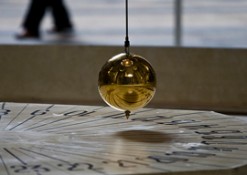
July 26, 2010

Public confidence in Congress has plummeted to the lowest level of any institution since Gallup began asking the question in 1973. One-half of all Americans have little or no confidence in the Congress.
Only 11 percent have a “great deal” or “a lot of” confidence in what is, given its place of primacy in the Constitution, the first branch of government and the branch most representative of the people.
The house of such giants as Daniel Webster, Henry Clay, John C. Calhoun and Henry Cabot Lodge, the greatest legislative body in the world that was home to John F. Kennedy’s “Profiles in Courage” who decided the questions of war and peace, Reconstruction and civil rights is now looked upon with pervasive mistrust.
Of the 16 major institutions of which the question was asked, Congress’ closest competitor for the least trusted was HMOs.
And this poll was taken after President Obama achieved what is being hailed by his party as the greatest legislative accomplishment since Medicare and Social Security.
Not only is this bad news for the Democratic Party this fall, it is reflective of the disdain if not contempt in which the nation’s political class is held by those they govern. Three times as many Americans have confidence in the Supreme Court as have in Congress.
And though Obama has been through a rough patch, three times as many Americans retain confidence in his office as have confidence in the Congress. Even when Bush was at his nadir, in 2008, 26 percent professed a high level of confidence in the presidency, more than twice those who today have confidence in the institution led by Nancy Pelosi and Harry Reid.
This would also seem to be bad news for democracy, as the closest competitor to Congress in public disregard was the 2008 Congress that enjoyed the trust of only one in eight Americans.
But the poll reveals even more about us as a people.
Only three institutions of the 16 have the solid confidence of the nation with more than 50 percent saying they have high confidence or a lot of confidence in them: the military at 76 percent, down from 82 percent a year ago, small business at 66 percent and the police at 58 percent.
All three institutions tend to be male-dominated, conservative and hierarchical. Two of the three feature men with guns—the soldiers, sailors, Marines and airmen who defend us from foreign enemies, and the thin blue line that defends us from the predators at home. Americans have a far greater appreciation of those who risk their lives to defend our country than for those who write its laws.
When one recalls how the military and police were regarded in the 1960s, the former being trashed for “the dirty and immoral war” in Vietnam, and the latter being called “racists” and “pigs” for battling campus radicals and urban rioters, what a difference a few decades can make.
What these surveys suggest is that the New Left of the 1960s was and is over-represented in the media depictions of that era. Some baby boomers were indeed in the mud at Woodstock. But others were in the mud at Khe Sanh. And large majorities of baby boomers helped deliver to Ronald Reagan his historic landslides in 1980 and 1984.
Half of all Americans yet retain confidence in organized religion, an institution not wildly popular with our cultural and media elites. Yet, the churches retain twice the level of confidence of the newspapers, and more than twice the level of confidence of television news, which ranks just below “the banks” at 22 percent.
This explains why the public is less enthusiastic than the press about enacting “shield laws” to protect journalists’ sources.
While the number of those having a high measure of confidence in the medical system has risen from 36 percent to 40 percent during this year of debate on health care, confidence in the public schools fell from 38 percent to 34 percent. Despite immense infusions of federal cash, the public schools are still bleeding public esteem.
As for Big Business, confidence there is not one-third that of small business. Washington, Wall Street, New York—our media and financial capital—and the Business Roundtable are not beloved.
If one takes only those institutions generally regarded as liberal and Democratic—newspapers, TV news, unions and Congress, not one enjoys the high confidence of even half of those Americans who have confidence in the church and religion. Even the honored office Obama occupies has lost one-fourth of the confidence it inspired a year ago.
In short, the Gallup Poll showing soldiers, small businesses, cops, preachers and pastors to be trusted, while journalists, bankers, big business, unions and congressmen are not mirrors the message of polls showing that conservatives now outnumber liberals two-to-one.
Those institutions in society perceived as dominated by liberals are also, perhaps not coincidentally, the least trusted in the land.
The pendulum is swinging back.